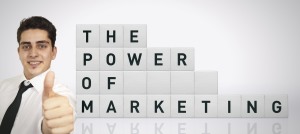Persuasive Marketing and marketing tactics go hand and hand
 Your marketing tactics must include Persuasive Marketing
Your marketing tactics must include Persuasive Marketing
How do marketers create marketing tactics to persuade people to buy what they’re offering? In the 1950s when a lot of selling was done with newspaper and magazine ads, some said the industry used subliminal advertising.
One of the most often cited examples of this alleged form of persuasion was in an ad for scotch whiskey featured a glass of the distilled spirit on the rocks. And in those rocks some said they saw an image of a scantily clad woman.
That was then, and this is now. We’re all a heck of a lot my sophisticated to be fooled into purchasing a bottle of scotch by naked lady ice cubes. Today there’s a real science behind the art of persuasion.
Perhaps the best science lesson we can learn is based on the teachings of Dr. Robert Cialdini, author of Influence: The Psychology of Persuasion. Cialdini and his research colleagues were able to identify six universal factors that guide decision-making. And not one of them has to do with booze or broads.
These six shortcuts, as Cialdini has labeled them, are small, practical and costless. Oh, they’re also totally ethical, unlike that near naked lady back in the 1950s.
I think you’ll find these principals so compelling that I’m only going to write about three of them this month. You’ll just to wait to drink in details on the other three in one of my upcoming blogs.
 Persuasion Marketing Number 1: Reciprocity
Persuasion Marketing Number 1: Reciprocity
This principle is based on the obligation that people feel to give back after receiving something from others. The example Cialdini used to proves that reciprocity works is of a server in a restaurant. His study showed that when the server gave the diner a mint with the check, it increased the server’s tip by 3%. Giving two mints upped the gratuity by 14%. If you think that’s pretty good, get this: if the server leaves one mint, begins walking away, and then turns back, and says, “but for you nice people, here’s another mint.” Tips increased by 23%. This big bump up in the amount of the gratuity was influenced not by what was given, but by how it was given. The Principal of Reciprocity teaches us to be nice and give a little something extra
Persuasion Number 2: Scarcity
This principle of persuasion marketing is based on the fact that people want more of those things there are less of. The example Cialdini used to show that scarcity works is when British Airways announced that they would no longer be flying their twice-daily route from London to New York with the supersonic Concorde jetliner because it had become uneconomical for the airline. As soon as word got out, it didn’t take very long (one day in fact) for sales to, pardon the airplane pun, soar. The airline hadn’t changed a thing about this flight, it had merely declared that it had made it scarce, and because of this, people wanted it more. If the Principal of Scarcity worked for a supersonic jetliner, it will surely work for you once you inform people of what they stand to lose.
Persuasion Number 3: Authority
This principle of persuasion is based on the fact that people will follow the advice of experts and people in authority. The example Cialdini used to demonstrate that authority works is of physical therapists that were able to persuade most of their patients to accept a course of action if they prominently displayed their medical degrees and certificates on the walls of their offices. What worked for members of the PT field also worked for a group of realtors. The manager of the firm instructed the receptionist to mention the credentials of agents before putting callers through to them. Like the two principals before it, this small, practical, costless, and totally ethical approach worked wonders. This one prompted a 20% rise in appointments and a 15% boost in signed contracts.
It worked for them, but will it work for you?
These principals of persuasion centered on restaurants, an airline, a physical therapist practice and a real estate firm, but they can be applied to any business or industry. Think about them each and every time you’re creating a direct mail piece or a brochure, or getting ready to attend a trade show or conference. After all, the messages you put out there are far more likely to persuade folks to purchase your products or services when you think like a scientist.
 Let’s connect
Let’s connect
If you’d like to learn more about how we think here at Ferrante & Associates, subscribe to our blogs or our monthly Newsletter Ferrante Speaks. You may also follow us on Twitter, Google+ or Facebook.
Don’t miss out: Subscribe and receive regular updates delivered automatically via a web portal, newsreader or email.







